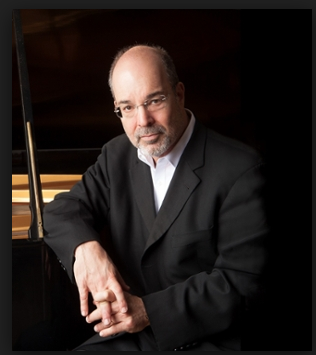Key Pianists presents Norman Krieger in Review
Norman Krieger, piano
Weill Recital Hall at Carnegie Hall, New York, NY
Wednesday, October 17, 2018, 8PM
The fourth season of the wonderful Key Pianists series opened on Wednesday, October 17th with a majestic recital by the American pianist Norman Krieger. Key Pianists has a mission of presenting lesser-known pianists, often stellar in quality, who may not “fit” into the established “star” system.
Mr. Krieger has everything: technique (of course, one assumes), but one that never calls attention to itself, only to the musical ideas- a truly admirable virtue. He has the thundering fortes (but never harsh, surely the inheritance of his former teacher Adele Marcus) and the breathtaking, whispering piano dynamics, along with everything in between. He has the intellectual probity of another of his mentors, Alfred Brendel. His phrasing is generous, and his elasticity always in proportion. He presents the ideal combination of respect for the score, along with a fusion of the composers’ emotional message without sacrificing the performer’s own passion and point of view.
I can always tell by the first two or three notes if I am going to be comfortable in a recital and really enjoy the pianist. Thus, when the opening arpeggio of the first work of the evening, Beethoven’s Sonata Op. 31, No. 2, often referred to as “The Tempest,” was played with absolute perfection, followed by meticulous portamenti, ascending the triad, I was set at ease. The alternation of stormy fast outbursts with the mysteries of the way the arpeggiation is developed were balanced and exciting. I have never heard a more thrilling rendition of the pedaled recitativo sections, which caused me to hold my breath until they were over. The middle movement, Adagio, sang and consoled with evocations of muffled timpani and horns, and the final Allegretto was not rushed, without losing any propulsion or demonic subtext.
Mr. Krieger then had the inspired idea of presenting two sets of preludes by relatively unknown composers. I had never heard a note of Henri Lazarof performed live, only on recordings, and Michael Fine was new to me. The prelude as a free-standing genre piece (not the introduction to something else) has benefited many composers for its concise expression: Chopin, Debussy, Fauré, Rachmaninoff, to name but a few. Mr. Krieger prefaced the performances with well-chosen verbal commentary. In the case of Lazarof, a Bulgarian-born composer who finished his life in the United States, he mentioned correspondences between modern visual art and the late-Romantic and even sometimes twelve-tone language of Lazarof. The three preludes (from a larger set of twelve) were redolent with finely gauged attention to color. Fine, an American-born composer who now resides in Europe, created preludes that are more aphoristic, containing more than a bit of Copland-esque typically “American” atmosphere, something Mr. Krieger said we needed now “more than ever.” His delicacy and wit in these miniatures was delightful.
Mr. Krieger finished the first half with three brief but difficult works by Chopin. First, Chopin’s very first nocturne, the B- flat minor, Op. 9, No. 1, whose debt to Bellini-style cantabile is apparent from the first measure. Once again, Krieger rose to the poetic demands with wonderful variation of the many repeated passages. He followed with two of the etudes, Op. 25, No. 1 in A-flat major and Op. 10, No. 12 in C minor. I have heard the A-flat (sometimes called the “Aeolian Harp”) played with greater delicacy, but rarely greater evenness. Then he gave a truly masterful “no-nonsense” reading of the great C minor (“Revolutionary”) that masked just how difficult it is, so great was his command.
After intermission, just one work dominated: the enormous four-movement Brahms Sonata No. 1 in C major, his Opus 1. This work strains against the boundaries of what a solo piano can do, often sounding like an orchestra. It also contains a nightmarish compendium of technical, musical, and balance problems for the interpreter—we were in good hands however. What amazed me most was Mr. Krieger’s ability within a fast, loud, and propulsive movement (of which there are three in this work) to find oases of great calm and yearning. This allowed me to appreciate how, for a work in a major key, Brahms loves to stray and dwell in the minor mode, typical of his Romantic-era unfulfilled longing. In the second movement, Mr. Krieger captured the sound of the German Männerchor, with its solo call and choral response, through atmospheric pedaling. The exacting leaps of the final two movements posed no apparent problems for Mr. Krieger, as he accelerated to the thrilling conclusion, and rose from the bench with one last release of all that energy.
The audience rose too, as one, and was favored with one encore: Gershwin’s Prelude No. 2, a masterclass on the “art of artlessness” by Mr. Krieger.

